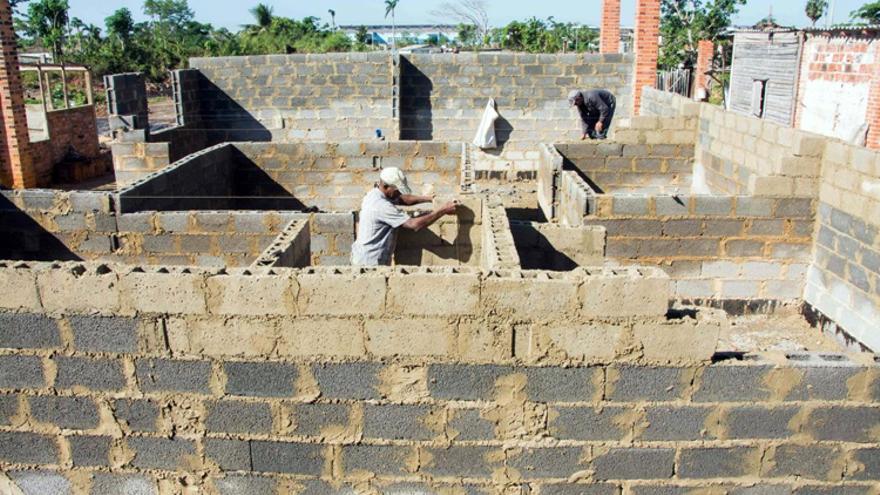
![]() 14ymedio, Havana, 23 October 2023 — At the end of September, with just four months left until the end of the year, 649 houses had been built in Ciego de Ávila, fewer than half of the 1,321 in the state annual plan for 2023. According to the official press, even building 40,000 homes would not completely alleviate the housing shortage in the province, where the situation is one of the most serious in the country.
14ymedio, Havana, 23 October 2023 — At the end of September, with just four months left until the end of the year, 649 houses had been built in Ciego de Ávila, fewer than half of the 1,321 in the state annual plan for 2023. According to the official press, even building 40,000 homes would not completely alleviate the housing shortage in the province, where the situation is one of the most serious in the country.
The provincial newspaper Invasor claims that, on average, the province built nearly 1,000 homes annually. The achievement of building 1,300 houses in 2020 led to the territory’s authorities setting the target even higher for the following year, at 1,581. The economic crisis aggravated by the Ordering* Task and the Covid-19 pandemic made the goal impossible to meet, and the province ultimately achieved only 35.2% of it.
Since then, the materials necessary for the works, which were already difficult to obtain, disappeared from the so-called State “patios or traces” (points of sale of materials), and getting hold of a few bags of cement, a cubic meter of gravel or a few reinforcing rods became impossible. The year 2022 was also terrible for housing construction in Ciego de Ávila, with only 560 houses being built, 35.2% of what was planned.
This year, although a little more has been accomplished than the previous twelve months, Avilanian families waiting for their homes will have to continue doing so. The newspaper highlights, however, the “completion” of 103 “basic cells” for vulnerable people, as well as 23 houses for mothers with more than three children, and the use of several premises already built to transform them into living spaces, have all been measures that “relieve tensions.”
The unrest of the people of Avila is not recent. An article by Invasor published last year reported that by 2021, only 58.6% (2,478) of the houses that suffered collapses when Hurricane Irma passed through the central region of the country four years earlier in 2017, had been built. Almost five years later, there were still 1,753 homes to recover, in addition to the projection that the province makes each year of new houses to be built. “They are numbers that are not rounded, just as necessity is not rounded,” admitted Invasor.
The article also documented a statement by Ernesto Herrera, deputy technical director of Housing in the province, who complained that the prohibition against this state entity purchasing homes that are for sale in the real estate market hampered not only the company’s results, but the ability of vulnerable families to access a decent home in the shortest possible time.
Such an alternative would have saved funds and construction materials, especially if it had been implemented in recent years, when the massive emigration of thousands of Cubans left a large number of homes free and prices in the real estate market, which are mainly expressed in foreign currency, dropped.
In Villa Clara, the neighboring province, the housing situation is also “compromised.” According to data provided this August by the Vanguardia newspaper, 39% of the territory’s homes are in poor condition and the capacity to build more houses is in a structural slump, functioning at 45%, due to the shortage of materials.
According to María del Carmen González, provincial director of Housing, in 2019 the entity designed a ten-year plan to build 46,051 new houses and repair another 33,111. However, of the numbers planned for the last four years – 13,353 homes – 3,287, or 25%, remain to be completed. The majority of the properties were built between 2019 and 2020, just before the pandemic, which was followed by a period of stagnation that cannot be made up for.
Pinar del Río, for its part, is also not going at a good pace with the recovery of the homes collapsed during the passage of Hurricane Idalia this August. By the time the cyclone was affecting hundreds of families in the province hardest hit by these meteorological events, 97% of the 12,000 homes with total collapses after Hurricamne Ian passed through, a year earlier, still had to be built.
*Translator’s note: The “Ordering Task” [Tarea Ordenamiento] is a collection of measures that include eliminating the Cuban Convertible Peso (CUC), leaving the Cuban peso as the only national currency, raising prices, raising salaries (but not as much as prices), opening stores that take payment only in hard currency which must be in the form of specially issued pre-paid debit cards, and a broad range of other measures targeted to different elements of the Cuban economy.
____________
COLLABORATE WITH OUR WORK: The 14ymedio team is committed to practicing serious journalism that reflects Cuba’s reality in all its depth. Thank you for joining us on this long journey. We invite you to continue supporting us by becoming a member of 14ymedio now. Together we can continue transforming journalism in Cuba.
